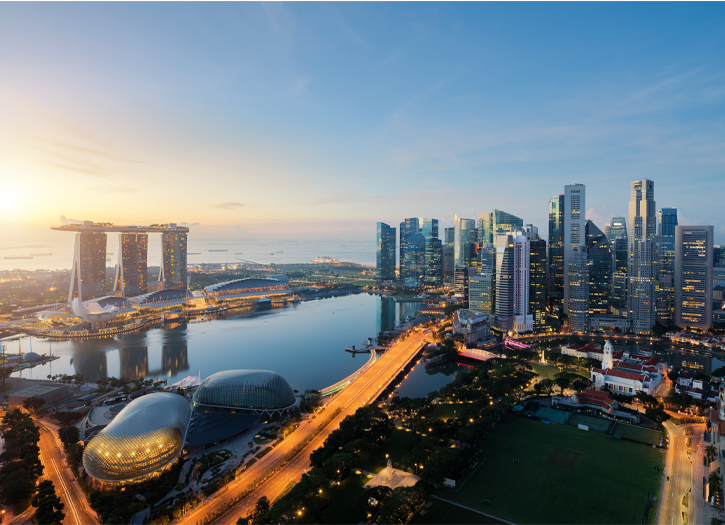The first case in Singapore was confirmed on 23 January. Early cases were primarily imported until local transmission began to develop in February and March. By late-March and April, COVID-19 clusters were detected at multiple dormitories for foreign workers, which soon contributed to an overwhelming proportion of new cases in the country. Singapore currently has the third highest number of confirmed COVID-19 cases in Southeast Asia, behind Indonesia and the Philippines.
Singapore also contributed US$500,000 to support World Health Organization (WHO) efforts against COVID-19. In response to the growing number of new cases, Singapore announced on 3 April a stringent set of preventative measures, collectively called the “circuit breaker“, to be applied from 7 April to 4 May. The circuit breaker was extended to 1 June on 21 April following continued untraced transmission within the community. As of 4 September 2020, there are a total of 56,948 confirmed cases, with 56,028 recoveries and 27 deaths.
Throughout the outbreak, cases were traced to clusters that several cases had visited during a particular time period, with venues including religious institutions, workplaces, construction sites, a number of schools, private events, retail businesses, and a hospital. Imported cases also became a source of infection in March. Since early April, most new cases have been at foreign worker dormitories and construction sites, with 53,805 of 56,948 total confirmed cases being dormitory residents The highest number of daily cases was reported on 20 April at 1,426 with the last imported case on 4 September.
A research by the European Commission suggests that the CFR for SARS-CoV-2 virus picks up in cases 50 years of age and above. The elderly in the general population in Singapore have been advised to stay at home as much as possible, while resident-facing staff in old folks homes are being housed on site or separately in hotels. 12 May saw 20,799 patients receiving treatment – the highest since the outbreak began. The last date of any patient in ICU was 5 August 2020. 14 August 2020 was the first time since June that there were no reported community cases.
In March, as the number of cases began to rise exponentially around the world, the Ministry of Foreign Affairs (MFA) and the Ministry of Education (MOE) began to encourage Singaporeans to return home. Various institutes of higher learning recalled their students currently on overseas internship or exchange, and the MFA began liaising with airlines to facilitate flights to key cities.
The ongoing pandemic is likely to have a significant impact on the local economy. On 17 February, the Ministry of Trade and Industry (MTI) downgraded Singapore’s forecast GDP growth to between -0.5% and 1.5%.This is largely due to a slowdown in Singapore’s export markets, disruptions in global supply chains, a fall in tourism and a fall in domestic consumption. On 26 March, MTI said it believed that the economy would contract by between 1% and 4% in 2020. This was after the economy shrank some 2.2% in the first quarter of 2020 from the same quarter in 2019. On 26 May, the Singapore economy contracted 0.7%YoY, which was better than the expected contraction of 2.2%.
On 6 April, it was announced in Parliament that Changi Airport Terminal 2 will be suspended from 1 May for 18 months due to the ongoing pandemic. The suspension of Terminal 2 will also allow the ongoing expansion work announced in January 2020 to be completed up to a year ahead of schedule in 2023 instead of 2024. Data released by the Ministry of Manpower showed that total employment contracted by 19,900 in Q1 2020, which was the biggest drop since SARS in 2003. Foreign workers were vulnerable to being let go during the crisis as support measures such as the Jobs Support Scheme were primarily targeted as subsidising the wages of local staff not all employees.
Ministry of Manpower reported that unemployment in the first quarter of 2020 rose to 2.4 per cent from 2.3 per cent the quarter previously, the highest in a decade .As a result of the Coronavirus disease 2019, Resorts World Sentosa would reduce a significant amount of its workforce.







Add Comment